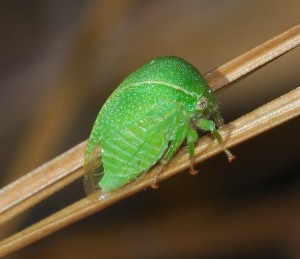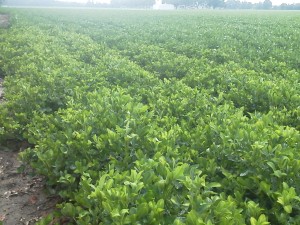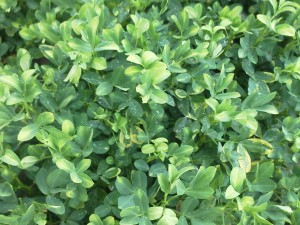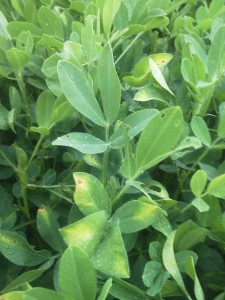A key insect pest is one that often triggers the first insecticidal treatments in a field, and the three-cornered alfalfa hopper (TCAH) apparently has reached that status locally. The first insecticide treatments then influence other pest activities the remainder of the season. Specifically, in this situation, treatment for TCAH eliminates beneficial insects and allows an opportunity for caterpillar pests to build in fields. Some of us call this the “caterpillar hampster wheel.” Once you get on, you can’t get off.
Some entomologists are not convinced that we need to be spraying a lot for three-cornered alfalfa hoppers, because the resulting effect on beneficial insects. There is very limited data showing yield reductions at high populations, and we have little information about whether some peanut cultivars show yield reductions and/or greater visible symptoms.
The damage from TCAH is stem girdling, and you will often see the stem rooting out below a girdled stem. This insect likes moisture and places with abundant rainfall generally see high populations develop fast.
Dr. Steve Brown, UGA Extension Entomologist, proposed the following treatment thresholds in 2006.
| Greater than 75 days to digging 25-75 days to digging Less than 25 days to digging |
1 adult per 6 ft. of row, or, any nymphs 1 adult or nymph per 3 feet of row Do not spray for 3CAH |
Due to the mobility of this insect, identifying the number of insects is often problematic, and you will find higher levels on the edges of fields, as they move from overwintering sites. I suggest you survey your fields and determine treatments on a field by field basis.
Potato Leafhopper
The more visible damage we are seeing in most of our fields is the result of Potato Leafhoppers. Most people identify the TCAH pictured above and see the damage from the potato leafhopper. We also have very little information regarding yield loss or impacts among cultivars. However side by side fields of different cultivars often show remarkable differences in symptoms. We have had several fields with heavy feeding symptoms locally and made treatments. Dr. Jay Chapin, Retired Clemson University Extension Entomologist recommended if hopper burn and active populations are observed, control is advised. However, keep in mind the comments above regarding the “hampster wheel.” We are using pyrethroids with good results.




